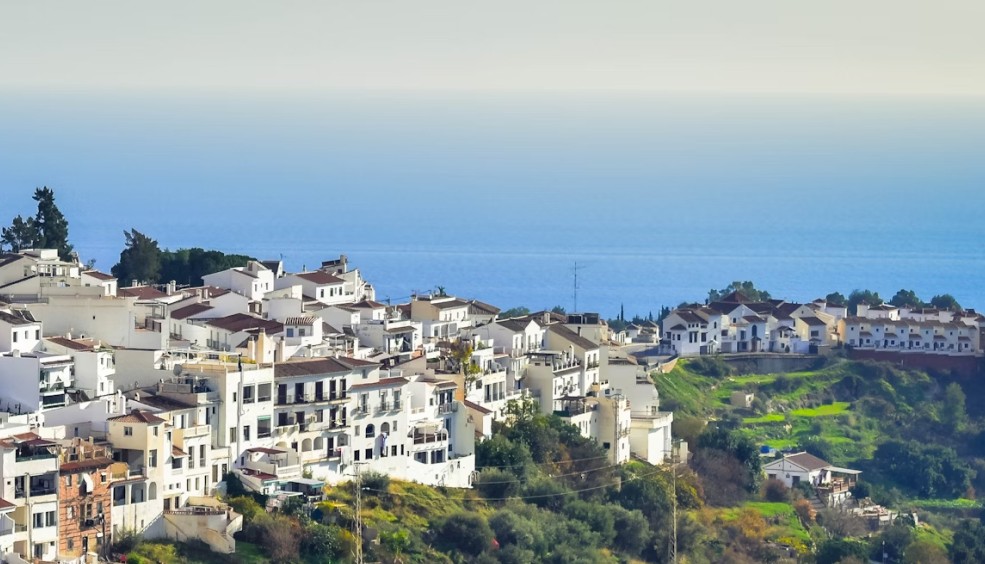Five Spanish summer dishes
We love discovering new destinations through their food and drink. In Spain, as well as typical food that you can eat all year round, like paella, tortilla and bread with tomato, you can also find special dishes that are perfect for summer. Ideal recipes for hot days when you really fancy something light and fresh.
more infoTop winter destinations
There are places that are perfect this time of year because of their pleasant climate and great prices, and because they are quieter than in summer. If you fancy a getaway over the next few months, these are the winter destinations to look out for:
more infoThe best white towns in Andalusia to enjoy autumn
Enjoy autumn in Andalusia by visiting white towns like Ronda, Grazalema, Mojácar, Frigiliana, Vejer de la Frontera, Zuheros, Arcos de la Frontera and Cazorla. Narrow whitewashed streets, breathtaking viewpoints, local food, nature and lots and lots of art.
more infoDoñana Europes Iconic Nature Park
Distributed across the provinces of Huelva, Seville and Cádiz stretches one of the most emblematic national parks in both Spain and Europe. The Doñana National Park and Nature Reserve, made up of 108,086 hectares of National Park and 53,835 hectares of Nature Reserve, is a jewel coveted by nature enthusiasts, ecosystem devotees and even lovers of outdoor activities. In the following we reveal the secrets to an in-depth encounter with this vast and wonderful natural enclave.
An Ecotourist Paradise
You enjoy roaming through natural surroundings and soaking up their charms? Here you will find a variety of ecosystems to indulge in –preserves, pine groves, lagoons, marshes, wetlands, beaches and dunes will escort you on your journey through Doñana, and in them a rich variety of fauna and flora.
The park’s flora includes over 900 different species, prominent being the large-fruited juniper, cork oak, stone pine, oleander, broom, thyme, rosemary, brambleand a long list of others. Noteworthy among the fauna of Doñana, of which there are over 500 species, is the Iberian lynx, one of the most strictly protected species in the park, as well as a plethora of bird life, which we deal with below.
Birds, Birds and More Birds
While the fauna of Doñana is not limited to its bird life, birds are undoubtedly the leading lights of the park’s fauna, the lynx notwithstanding. They are also the reason most visitors come to this nature reserve. This national park is a longstanding favourite among ornithologists as a huge variety of migratory birds make a stopover at Doñana en route to warmer climes. Large numbers of birds also spend the winter in the park’s wetlands. Visiting the park in autumn or winter will bring you within sight of birds from northern Europe, while doing so in spring will afford views of those coming from Africa.
Planning Your Visit
There are various ways of touring Doñana, although you should take into account at all times that there are certain restrictions on moving about. The first thing to remember is that the nature reserve has fewer restrictions and is more accessible than the national park, to which access is more limited. The easiest and most popular means is to take an all-terrain minibus with a guide, as this is a way of seeing large areas of the park in comfort. A second option is by boat, which you get in Sanlúcar de Barrameda and which takes you along the Guadalquivir, with stops at various points along the river.
Lastly, there are other options that require more of an effort but which are bound to bring you into closer contact with nature, like hiking along the trails on foot or by bicycle. However, you are advised to first enquire at one of the visitor’s centres dotted around the park where you can get information on the various routes.
From Autumn To Spring
The best period to visit Doñana ranges from autumn – when the dry summer season comes to an end and the first migratory birds start flying in – until spring. In summer the park is rather too arid as most of the wetlands dry out during that season.
A Stopover at El Rocío
Whether or not it is time for the shrine pilgrimage, you should not fail to visit El Rocío on your Doñana route. The village is famous for its vastly popular shrine pilgrimage in honour of the Virgin Mary, which takes place at the Pentecost weekend and attracts throngs of people each year. Except when the festivity is in full swing, this village is a backwater of peace and quiet. There you should visit El Rocío shrine and take in the splendid views of the lagoon.
Book your Vueling to Jerez de la Frontera, located 35 kilometres from the Doñana National Park, and discover all the charm of this magnificent nature reserve.
Text by Los Viajes de ISABELYLUIS
Images by Nacho Pintos, Calvin Smith, Mr. Theklan, Porphyrio, Vince Smith
more info




